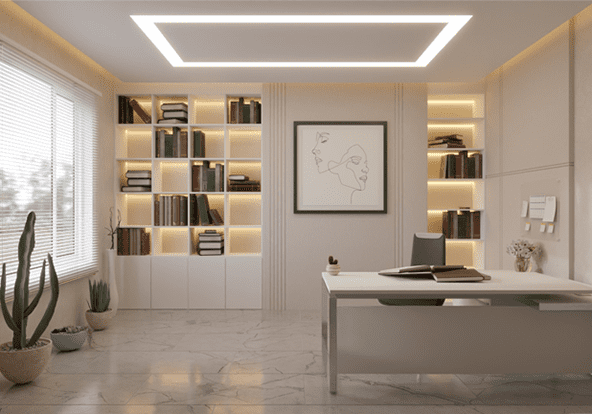
Image Source: Google
LED lighting has revolutionized the commercial lighting industry in recent years, offering energy efficiency, durability, and versatility that traditional lighting options simply can't match. As technology continues to evolve, new trends in commercial LED lighting design are emerging to meet the changing needs and preferences of businesses. In this article, we will explore some of the top trends that are shaping the future of commercial LED lighting design.
1. Integration of Smart Controls
One of the most significant trends in commercial LED lighting design is the integration of smart controls. By incorporating sensors, wireless connectivity, and advanced programming, LED lighting systems can be controlled and adjusted remotely, allowing for greater energy savings and customization. Some key features of smart controls include:
- Motion sensors to activate lighting only when needed
- Daylight harvesting to adjust lighting levels based on natural light
- Programmable lighting schedules for different zones
- Remote monitoring and control via smartphone apps or web interfaces
2. Human-Centric Lighting
Human-centric lighting is another trend that is gaining popularity in commercial LED lighting design. This approach focuses on mimicking natural light patterns to create a more comfortable and productive environment for building occupants. Key elements of human-centric lighting include:
- Tunable white lighting that allows for adjustment of color temperature throughout the day
- Circadian lighting that supports the body's natural rhythms and enhances well-being
- Dynamic lighting scenes that change based on activities or time of day
- Integration with building automation systems for seamless control
3. Emphasis on Sustainability
With an increasing focus on sustainability and environmental responsibility, commercial LED lighting design is placing a greater emphasis on energy efficiency and eco-friendly materials. Some of the sustainable trends in LED lighting include:
- Use of recyclable materials in fixture design
- Energy-efficient LED fixtures that reduce power consumption
- Integration of renewable energy sources like solar panels or wind turbines
- Designing systems for easy maintenance and upgrades to extend lifespan
4. Customization and Personalization
Businesses are increasingly looking for ways to differentiate themselves through unique lighting designs that reflect their brand identity and values. Customization and personalization in commercial LED lighting design allow for creative expression and flexibility. Some ways businesses are achieving this include:
- Customized fixtures that showcase logos or brand colors
- Dynamic lighting effects for special events or promotions
- Color-changing LED systems for mood-setting environments
- Integration of interactive elements like sensors or touch controls
5. Focus on Health and Well-Being
Research has shown that lighting can have a significant impact on human health and well-being, influencing everything from sleep patterns to mood and productivity. Commercial LED lighting design is now incorporating features that prioritize the health and comfort of building occupants. Key considerations for health-focused lighting design include:
- Reduced glare and flicker to prevent eye strain and headaches
- Optimal color rendering to enhance visibility and perception
- UV-free lighting that protects against harmful radiation
- Lighting controls that allow individuals to adjust lighting levels to their preference
Conclusion
As the commercial LED lighting industry continues to evolve, these top trends in design are shaping the future of lighting solutions for businesses. Whether it's integrating smart controls for energy efficiency, creating human-centric environments for well-being, or emphasizing sustainability and customization, LED lighting design is becoming increasingly sophisticated and tailored to the needs of each unique space. By staying informed and embracing these trends, businesses can create lighting environments that not only enhance the aesthetics of their spaces but also improve the comfort, productivity, and overall experience of their occupants.